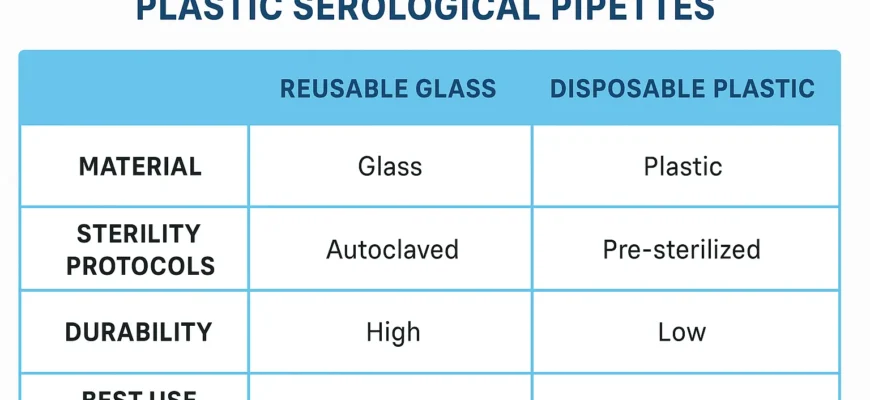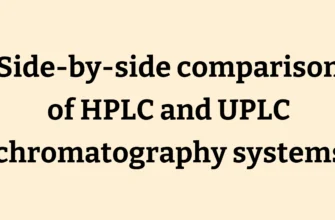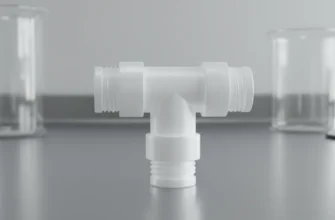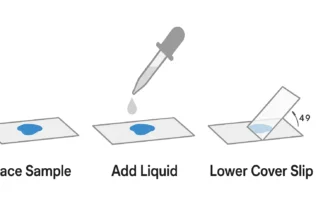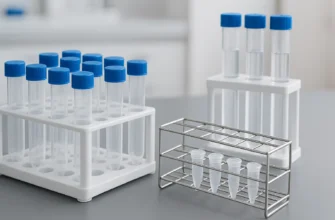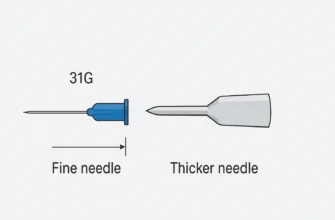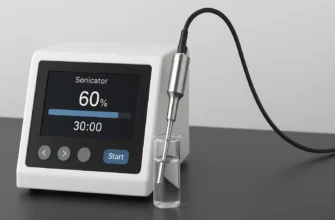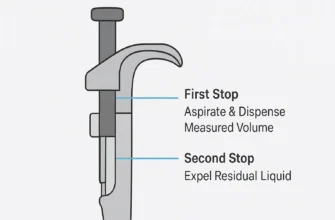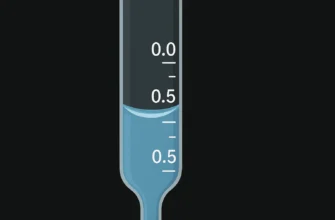Essential Guide to Choosing Serological Pipettes for Labs
Key Highlights
Serological pipettes are essential for precise liquid handling in volumes from 1 mL to 100 mL, with some manufacturers offering extended ranges.
They differ from micropipettes, which handle much smaller microliter volumes (0.1-1000 µL).
Common applications include cell culture work, sample dilutions, and preparing reagents in sterile environments.
You can choose between reusable glass pipettes and disposable plastic ones, each offering distinct advantages.
Key selection factors include volume requirements, accuracy specifications, sterility assurance, material compatibility, and packaging options.
Proper technique with appropriate pipette controllers ensures accurate, contamination-free results in compliance with international standards.
Introduction
In any modern laboratory, precision is non-negotiable. When it comes to liquid handling, having the right tool for the job can make all the difference between successful experiments and compromised results. Serological pipettes are fundamental instruments in fields ranging from molecular biology to clinical diagnostics, ensuring that you can transfer liquids accurately and safely. This comprehensive guide will walk you through everything you need to know about these indispensable tools, helping you choose the perfect serological pipettes for your lab’s specific needs while ensuring compliance with current industry standards.
Understanding Serological Pipettes and Their Unique Role in the Lab
A serological pipette is a graduated laboratory tool designed for transferring specific, measured volumes of liquid from one container to another. Unlike other pipettes that may be designed for extremely small or fixed volumes, these instruments offer versatility for liquid handling tasks, typically handling volumes between 1 mL and 100 mL. Some manufacturers now offer extended ranges up to 100 mL to meet diverse laboratory requirements.
These pipettes serve a crucial purpose in providing precision for liquid handling tasks that are essential for experimental success. Whether you are preparing cell culture media, diluting samples, or transferring reagents, using a serological pipette correctly ensures your results are consistent and reliable. The sophisticated design features, including clear graduations and precise calibration, make them indispensable for applications requiring both accuracy and sterility.
How Serological Pipettes Differ from Micropipettes and Other Types
Understanding the distinctions between different pipette types is crucial for selecting the appropriate tool for your application. Serological pipettes are distinct from micropipettes primarily in the volume ranges they handle and their intended applications.
Volume Differences: Serological pipettes handle milliliter (mL) volumes ranging from 1-100 mL, while micropipettes are designed for much smaller microliter (µL) volumes, typically between 0.1 µL and 1000 µL (1 mL). This fundamental difference makes serological pipettes ideal for tasks requiring larger volume transfers, such as cell culture media preparation and reagent mixing.
Design and Operation: Micropipettes are handheld devices with piston mechanisms and digital volume settings, using disposable plastic tips to prevent contamination. In contrast, serological pipettes are elongated tubes with graduated markings that require pipette controllers or bulbs for operation.
Application Specificity: While micropipettes excel in high-precision, small-volume tasks like PCR setup and DNA analysis, serological pipettes are preferred for general liquid transfer applications, cell culture work, and preparing solutions where larger volumes are involved.
Another important distinction involves volumetric pipettes, which are designed to transfer a single, highly precise volume (e.g., exactly 10 mL) without graduated markings for variable measurements. Serological pipettes feature markings along their length, allowing measurement of a range of volumes within their capacity.
Common Laboratory Uses for Serological Pipettes
Thanks to their versatility and volume range, serological pipettes are essential tools for numerous laboratory procedures. Their ability to accurately transfer milliliter volumes while maintaining sterility makes them indispensable in various scientific applications.
Cell and Tissue Culture: These pipettes are fundamental for transferring cell culture media, reagents, and cell suspensions in sterile environments. The sterile, individually wrapped options are particularly valuable for maintaining aseptic conditions during cell culture work.
Sample Preparation and Dilution: Preparing samples to correct concentrations for analysis requires precise volume control, making serological pipettes ideal for serial dilutions and sample preparation workflows.
Reagent Preparation: Mixing solutions and preparing buffers in larger quantities is efficiently accomplished with serological pipettes, particularly when working with volumes exceeding the range of micropipettes.
Microbiological Applications: In microbiology laboratories, these pipettes are essential for transferring bacterial cultures, preparing culture media, and conducting antibiotic susceptibility testing.
Proper usage involves attaching a pipette controller or bulb to create controlled aspiration and dispensing. For accurate measurement, the liquid’s meniscus must align precisely with the desired volume marking, requiring careful observation at eye level.
Types and Materials of Serological Pipettes
When selecting serological pipettes, material choice represents one of the most critical decisions, as it directly impacts performance, safety, and cost-effectiveness. The two primary options are glass pipettes and plastic pipettes, with plastic versions typically manufactured from medical-grade polystyrene.
Glass vs. Plastic Serological Pipettes
Glass Pipettes offer several advantages for certain applications. Made from high-quality borosilicate glass, they provide excellent chemical resistance and can be reused multiple times. These pipettes can be washed and sterilized in autoclaves, making them cost-effective for laboratories with high-volume usage. Glass pipettes meet ASTM E-1044 Style 1, Class A specifications and feature permanently enameled graduation markings and color-coded bands for easy identification.
However, glass pipettes have significant drawbacks. They are fragile and can break, posing safety risks to laboratory personnel. Additionally, they require sterilization before each use, which adds time and complexity to laboratory workflows.
Plastic Serological Pipettes have become the preferred choice for most modern laboratories. Manufactured from medical-grade polystyrene (USP Class VI approved), these pipettes offer several advantages:
-
Pre-sterilization: Most plastic pipettes arrive pre-sterilized by gamma irradiation (SAL 10⁻⁶), eliminating the need for in-lab sterilization
-
Safety: Shatterproof construction eliminates breakage risks
-
Clarity: Crystal-clear transparency provides excellent visibility for accurate volume reading
-
Contamination Prevention: Single-use design prevents cross-contamination between samples
-
Convenience: Individual wrapping maintains sterility until use
| Feature | Glass Pipettes | Plastic Serological Pipettes |
|---|---|---|
| Reusability | Reusable | Single-use/Disposable |
| Material | Borosilicate Glass | Polystyrene (PS) USP Class VI |
| Sterility | Must be sterilized before each use | Arrive pre-sterilized |
| Durability | Fragile, can break | Shatterproof |
| Chemical Resistance | Excellent | Good for most applications |
| Best For | Chemical resistance, repeat use | Sterile applications, convenience |
| Cost | Higher initial, lower per use | Lower initial, higher per use |
Volume Ranges and Size Options
Modern serological pipettes are available in a comprehensive range of sizes to accommodate diverse experimental needs. The standard volume range extends from 1 mL to 50 mL, with some manufacturers now offering 100 mL options for specialized applications.
Standard Size Options:
-
1 mL and 2 mL: Ideal for precise transfers of smaller volumes, with graduation intervals of 0.01 mL for maximum accuracy
-
5 mL and 10 mL: Most commonly used sizes for routine laboratory work, suitable for cell culture media and reagent preparation
-
25 mL and 50 mL: Designed for preparing large batches of solutions, media preparation, and high-volume transfers
-
100 mL: Extended-range option available from select manufacturers for specialized applications requiring larger volumes
Accuracy Specifications: Serological pipettes are manufactured to meet strict tolerance requirements. Most quality pipettes achieve ±2% accuracy at full volume, with some smaller volumes having slightly different tolerance specifications:
-
50 mL pipette: ±2% (±1,000 μL)
-
25 mL pipette: ±2% (±500 μL)
-
10 mL pipette: ±2% (±200 μL)
-
5 mL pipette: ±2% (±100 μL)
-
2 mL pipette: ±3% (±60 μL)
-
1 mL pipette: ±5% (±50 μL)
For optimal accuracy, select a pipette where your target volume falls in the upper portion of its range. This principle ensures measurements are taken in the most accurate portion of the pipette’s calibrated range.
Graduation Features: Quality serological pipettes feature clear, bidirectional graduations that allow easy reading during both aspiration and dispensing. Many pipettes also include negative graduations, providing additional working volume beyond the nominal capacity. This feature eliminates the need to use a larger pipette when slightly exceeding the nominal volume.
Practical Considerations for Choosing the Right Serological Pipette
Beyond material and size selection, several practical factors significantly influence which serological pipette best suits your laboratory’s specific requirements. These considerations can impact efficiency, accuracy, safety, and overall experimental success.
Sterility and Quality Assurance
Pre-sterilization Methods: Most modern plastic serological pipettes undergo gamma sterilization, achieving a Sterility Assurance Level (SAL) of 10⁻⁶. This process effectively eliminates microorganisms by disrupting their DNA without leaving residues or making products radioactive. Gamma sterilization is particularly advantageous because it penetrates packaging and materials completely, ensuring sterility throughout the pipette.
Quality Certifications: Leading manufacturers provide comprehensive quality assurance through multiple certifications and testing protocols:
-
Pyrogen-free (LAL Test ≤0.5-0.6 EU/mL)
-
Non-cytotoxic (ISO 10993-5 compliance)
-
DNase and RNase-free for molecular biology applications
-
Non-hemolytic (ISO 10993-4 compliance)
-
Endotoxin testing to meet pharmaceutical requirements
Packaging Options
Individual Wrapping: Individually wrapped pipettes in paper/plastic peel-back packaging maintain sterility until use and provide complete traceability with lot numbers and expiry dates. This packaging is ideal for applications requiring maximum sterility assurance, such as cell culture and molecular biology work.
Bulk Packaging: Bulk-packed pipettes in resealable bags offer cost-effectiveness for high-volume applications where individual sterility is less critical. Some manufacturers provide innovative dispenser boxes that allow single pipette removal without opening the entire package.
Compatibility and Standards Compliance
Controller Compatibility: Quality serological pipettes are designed with universal mouth pieces that fit all major pipette controller brands. This ensures seamless integration with existing laboratory equipment.
International Standards: Reputable manufacturers ensure their products comply with relevant international standards:
-
ISO 12771: Specifications for disposable plastic serological pipettes
-
ASTM E934: Standard specifications for serological pipettes
-
ISO 9001 and ISO 13485: Quality management systems for manufacturing
-
FDA and CE certifications: Regulatory compliance for medical device applications
Color Coding: International color-coding standards facilitate easy volume identification and reduce errors:
-
1 mL: Yellow
-
2 mL: Green
-
5 mL: Blue
-
10 mL: Orange
-
25 mL: Red
-
50 mL: Purple/Violet
-
100 mL: Pink (where available)
Calibration Types: TD vs. TC
Understanding calibration differences is crucial for proper pipette selection and usage. Serological pipettes are available in two primary calibration types:
To Deliver (TD): Most serological pipettes are calibrated TD, meaning they deliver the specified volume when used normally without blowing out the remaining liquid. This calibration accounts for the small amount of liquid that naturally adheres to the pipette walls.
To Contain (TC): Less common for serological pipettes, TC calibration means the pipette contains the specified volume when filled to the mark, but requires blow-out to deliver that exact amount.
The distinction is critical because using the wrong technique with either calibration type can lead to significant volume errors and compromised experimental results.
Leading Manufacturers and Brand Considerations
The serological pipette market features several established manufacturers known for quality and reliability. Thermo Fisher Scientific dominates the market with comprehensive product lines spanning budget to premium options, including their popular Falcon™ brand that offers exceptionally crisp graduations and reverse markings.
Eppendorf maintains a strong reputation for precision and quality, offering both electronic and mechanical options with glass and plastic variants from 1-50 mL. Their pipettes ensure top-tier sterility and are specifically designed for sensitive laboratory applications.
Corning provides the widely-used Stripette™ series, manufactured with optically clear polystyrene for accurate measurement and available in both individually wrapped and bulk packaging options. These pipettes are particularly popular for tissue culture applications.
Gilson, with over six decades of experience, offers the CytoPur series made with USP Class VI polystyrene, featuring polyester fiber plugs for contamination protection and gamma sterilization with certified RNase/DNase-free status.
Emerging manufacturers from China, Germany, and other regions are increasingly competitive, offering ISO-standard products at attractive price points while maintaining quality specifications suitable for basic to intermediate laboratory applications.
Conclusion
Selecting appropriate serological pipettes is fundamental to laboratory accuracy, efficiency, and experimental success. The choice between glass and plastic materials, volume ranges from 1-100 mL, and various packaging options should align with your specific laboratory requirements and applications. Key considerations include sterility assurance through gamma sterilization, accuracy specifications meeting international standards, and compatibility with existing pipette controllers.
Quality serological pipettes from reputable manufacturers provide the precision, safety, and reliability essential for cell culture, sample preparation, and reagent handling applications. By understanding the differences between TD and TC calibrations, material properties, and regulatory compliance requirements, laboratory professionals can make informed decisions that enhance productivity while maintaining the highest standards of precision.
Whether your laboratory prioritizes cost-effectiveness through reusable glass pipettes or convenience through pre-sterilized plastic options, the proper selection and use of serological pipettes will significantly contribute to consistent, reproducible results across all your liquid handling applications.
Frequently Asked Questions
Do serological pipettes come pre-sterilized or require sterilization?
Most modern plastic serological pipettes are disposable and arrive pre-sterilized by gamma irradiation (SAL 10⁻⁶), ready for immediate use. They are typically individually packaged to maintain sterility until use. Glass pipettes, however, are reusable and must be washed and sterilized in an autoclave before each use to prevent contamination.
How do I read measurement markings accurately on a serological pipette?
For accurate reading, hold the pipette vertically at eye level and read the bottom of the meniscus—the curved surface of the liquid. Serological pipettes feature clear, bidirectional graduations for easy reading during both aspiration and dispensing. Using the appropriate size pipette for your target volume (preferably in the upper portion of the range) improves precision and accuracy.
What volume ranges are available for serological pipettes?
Serological pipettes are available in standard sizes of 1 mL, 2 mL, 5 mL, 10 mL, 25 mL, and 50 mL, with some manufacturers now offering 100 mL options. Each size features specific graduation intervals and color coding for easy identification, following international standards for laboratory safety and efficiency.
What accuracy specifications should I expect from quality serological pipettes?
Quality serological pipettes typically achieve ±2% accuracy at full volume for most sizes, with some variation for smaller volumes. Specific tolerances include: 1 mL (±5%), 2 mL (±3%), and 5-50 mL (±2%). These specifications comply with international standards such as ISO 12771 and ASTM E934.

